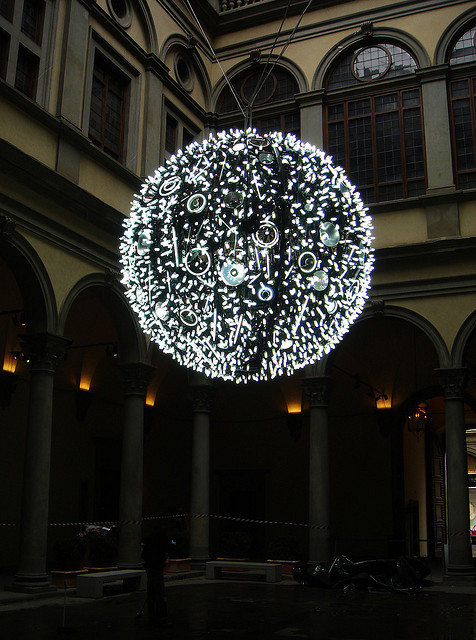FWP:
The verse is an elegant exploitation of a single anecdote from Islamic story tradition. For poetic purposes, all we need to know is that the Moon of Nakhshab was artificially made, was an inferior copy of a superior original, and was destined to fall apart after a short lifespan. For other purposes, here's one take on its alleged creator, *al-Muqanna*.
One pivot on which the verse turns is the word hanuuz , meaning both 'still' and 'yet, now'. For more on the creative use of hanuuz , see {3,4}.
In addition, there's the versatile chho;Rnaa , with its range of meanings including both 'to release' and 'to abandon'. So there are two obvious readings of the verse:
=The hand of destiny released it [to shine as well as it could], like the Moon of Nakhshab, [although] the sun had not yet become equal to her [and thus needed more work].
=The hand of destiny dropped it [in vexation], like the [short-lived] Moon of Nakhshab, [because] the sun had still not [after its best efforts] become equal to her.
As hardly needs to be said, 'that one' is the beloved,
and the clever multivalence of the compliment hardly needs to be elaborated.
The beloved's beauty is the original, the sun is the copy; the beloved's beauty
is inimitable, and the hand of destiny itself can't duplicate it; the beloved's
beauty is lasting and real, the sun is contrived and transitory by comparison. This verse thus belongs to the 'snide remarks about the natural world' set; for others, see {4,8x}.

Hali:
He has compared the sun to the beauty of the beloved, and declared it to be a deficient creation; for it he has given the simile of the moon of Nakhshab.
==Urdu text: Yadgar-e Ghalib, p. 127